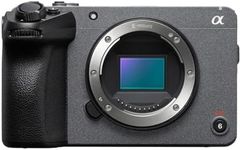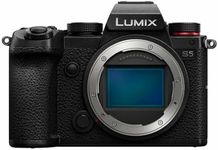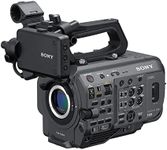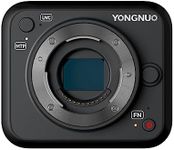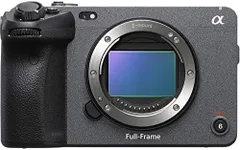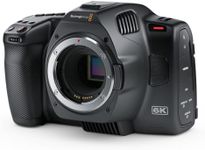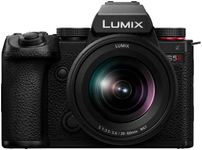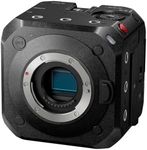Buying Guide for the Best Cinema Cameras
Choosing the right cinema camera can be a daunting task, but with the right approach, you can find the perfect fit for your needs. Cinema cameras are designed to capture high-quality video footage, and they come with a variety of features and specifications that can greatly impact your filming experience. To make an informed decision, it's important to understand the key specifications and how they relate to your specific needs and projects.ResolutionResolution refers to the number of pixels that the camera can capture in each frame. Higher resolution means more detail and clarity in the footage. Common resolutions include 1080p (Full HD), 4K, and even 8K. If you are working on high-end productions or need to future-proof your content, a higher resolution like 4K or 8K might be necessary. For smaller projects or online content, 1080p might be sufficient. Consider the final output and distribution of your work when choosing the resolution.
Sensor SizeThe sensor size of a cinema camera affects the depth of field, low-light performance, and overall image quality. Larger sensors, such as full-frame or Super 35, can capture more light and provide a shallower depth of field, which is desirable for cinematic looks. Smaller sensors, like Micro Four Thirds, can be more compact and affordable but may not perform as well in low light. Choose a sensor size based on the type of projects you will be working on and the look you want to achieve.
Dynamic RangeDynamic range is the camera's ability to capture details in both the darkest and brightest parts of a scene. A higher dynamic range allows for more flexibility in post-production and helps to avoid losing details in shadows or highlights. Cameras with a dynamic range of 12 stops or more are considered good for professional work. If you plan to shoot in challenging lighting conditions or want more control over your image in post-production, prioritize a camera with a high dynamic range.
Frame RatesFrame rates determine how many frames per second (fps) the camera can capture. Standard frame rates are 24fps for a cinematic look, 30fps for TV, and higher frame rates like 60fps or 120fps for slow-motion effects. If you need to capture fast action or create slow-motion footage, look for a camera that supports higher frame rates. For most narrative work, 24fps is the standard, but having the option for higher frame rates can add versatility to your projects.
Codec and BitrateThe codec and bitrate determine the quality and file size of the recorded footage. Common codecs include ProRes, DNxHD, and H.264. Higher bitrates result in better image quality but larger file sizes. If you need high-quality footage for professional editing, choose a camera that supports high-bitrate codecs. For easier file management and faster workflows, lower bitrates might be sufficient. Consider your post-production capabilities and storage solutions when evaluating codecs and bitrates.
Lens MountThe lens mount determines what type of lenses you can use with the camera. Common mounts include EF, PL, and E-mount. The choice of lens mount affects the availability and compatibility of lenses. If you already own lenses, choose a camera with a compatible mount. If you are starting from scratch, consider the range and quality of lenses available for each mount. The right lens can significantly impact the look and feel of your footage.
Audio CapabilitiesAudio capabilities are important if you plan to capture sound directly with the camera. Look for features like XLR inputs, phantom power, and manual audio controls. Good audio quality is crucial for professional productions, so ensure the camera meets your audio recording needs. If you plan to use external audio recorders, this may be less of a concern, but built-in audio features can still be a valuable convenience.
Ergonomics and Build QualityErgonomics and build quality affect how comfortable and durable the camera is during use. Consider the weight, size, and layout of controls. A well-built camera can withstand the rigors of professional use and provide a better shooting experience. If you plan to shoot handheld or in challenging environments, prioritize a camera with robust build quality and good ergonomics. Test the camera in person if possible to ensure it feels right for you.
